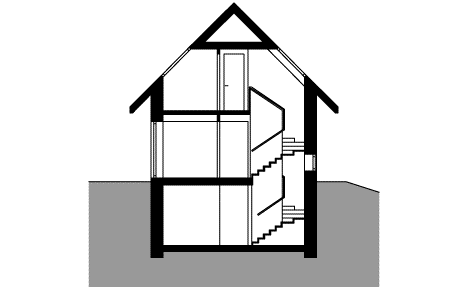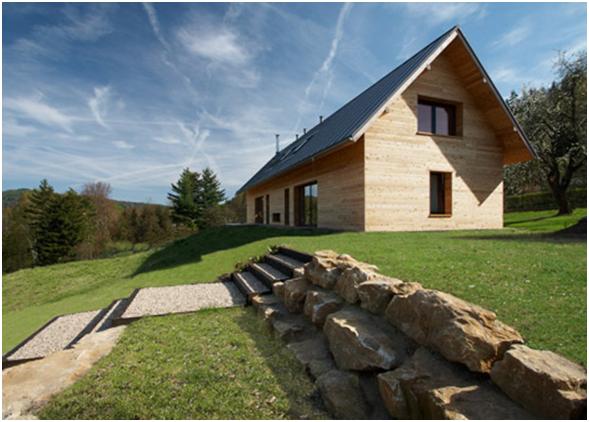
The family house is located in Český ráj, an 18,000-hectare nature reserve also known as Bohemian Paradise, and the house nestles against a hillside blanketed with grass.
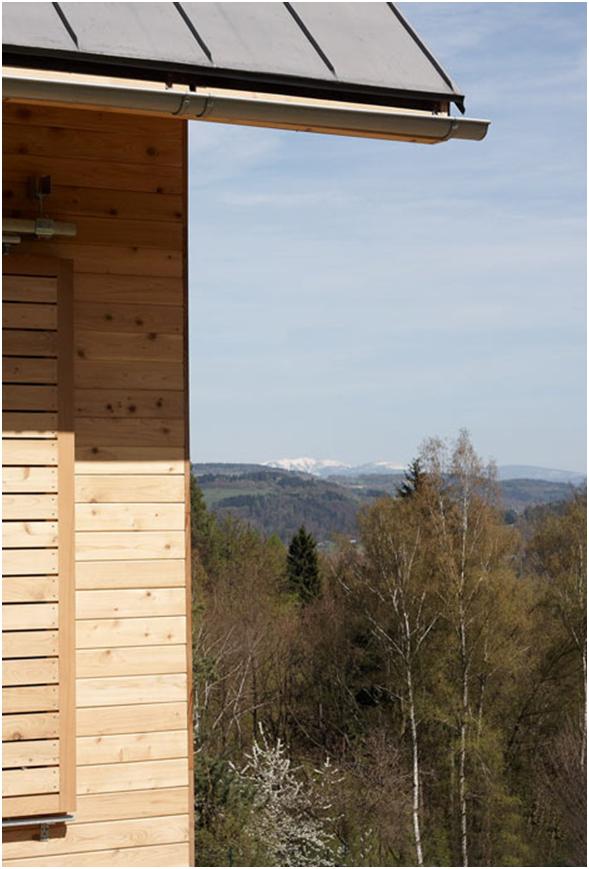
Stempel & Tesar tunneled down into the landscape to make room for a sauna that had been requested by the client. “We decided to add a basement rather than increase the footprint of the house,” architect Jan Tesar told Dezeen. “It wasn’t too complicated to build because of the sloping site.”
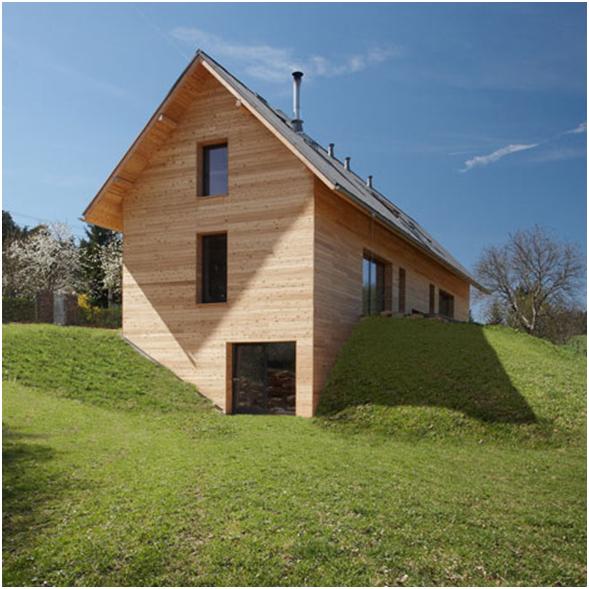
The rest of the three-storey house is designed to reflect the traditional local vernacular, as planning conditions in the area are strict. Three elevations are clad with timber, while the fourth is covered with stone – a nod to the old Bohemian residences that also contained workshops or barns.
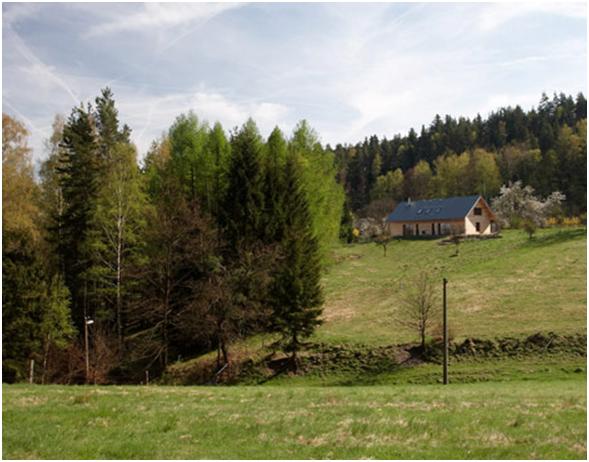
Design guidelines stipulated that no more than four windows could be added to each elevation, plus each one had to follow precise size and proportion guidelines. The architects got around this by designing large timber shutters, which slide across larger glazing panels on the north-east walls.
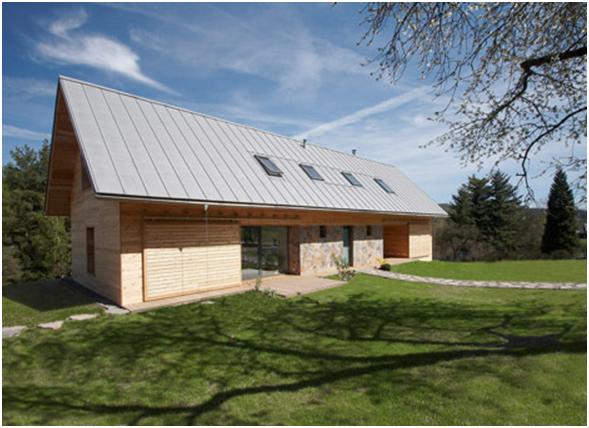
A steeply pitched roof oversails the walls and is clad with pre-weathered sheets of titanium-zinc.
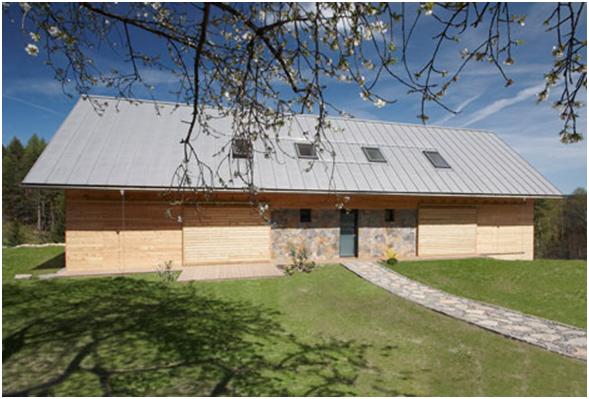
Rooms inside the house follow a basic linear arrangement and are divided into two rows by a central corridor.
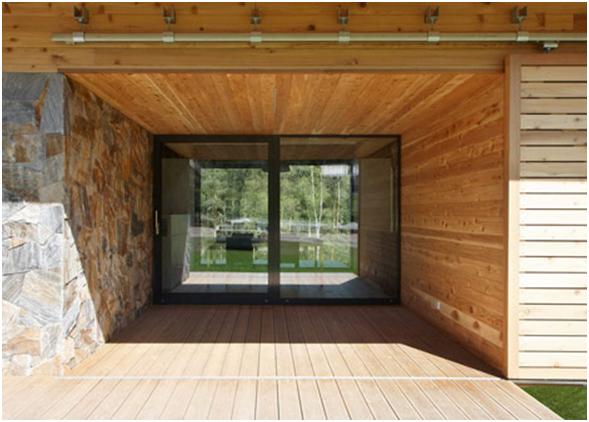
Other residences completed recently in the Czech Republic include a gabled lodge with a first-floor observatory. See more Czech architecture on Dezeen.
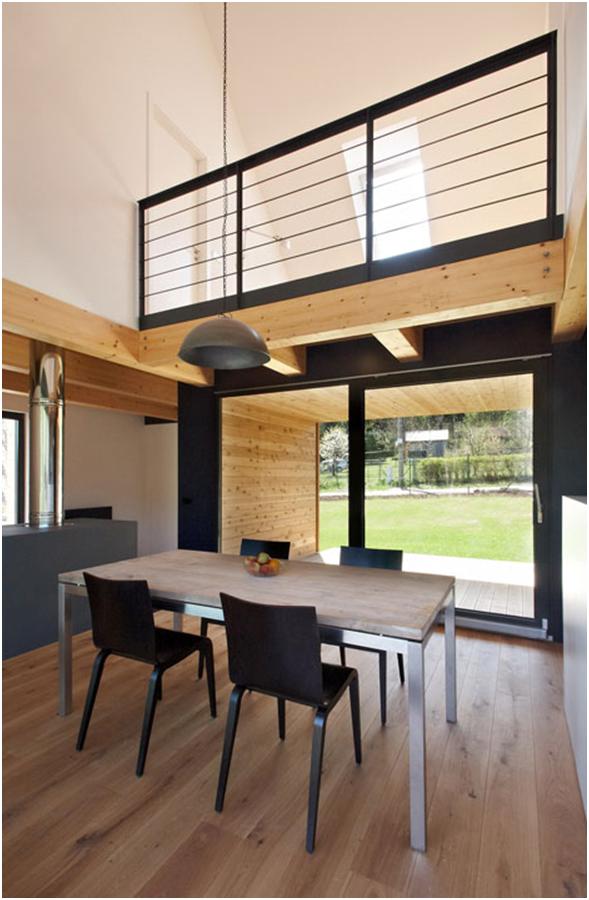
Photography is by Fotes.
Here’s a project description from Stempel & Tesar:

Cesky raj – Stempel & Tesar architekti
The opportunity to construct a family house in Cesky raj turned out to be a very pleasant and unique one right from the very first moment when we met the client.
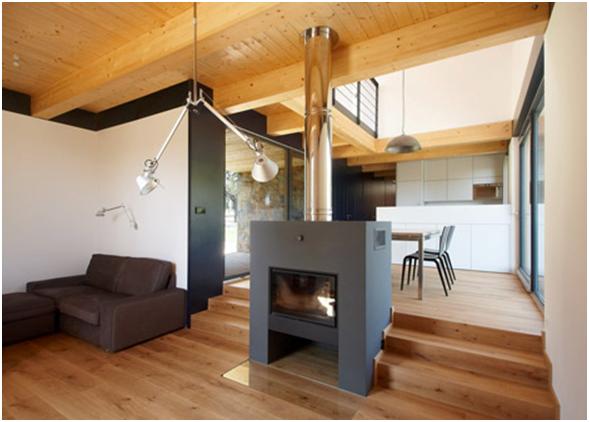
Unique location adjacent to a wood with view opportunities to rocks and forests was constraint by very prescriptive and challenging planning restrictions applicable in the location in protected natural area.
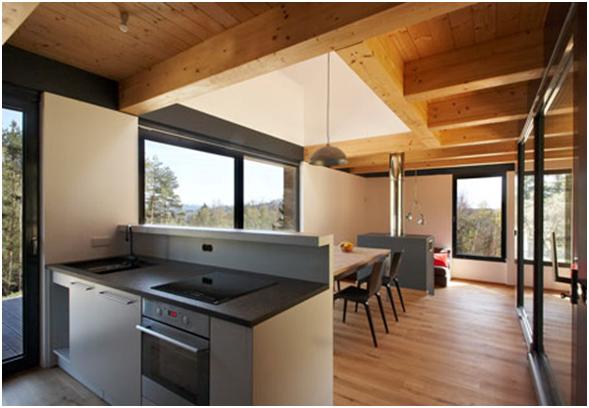
The guidance documents from the authorities outlined the design meticulously: main windows must be of rectangular shape, long edge vertical, subdivided into glass panes, fixed window height ratio of 2:3 up to 4:5, the typical width of windows between 0.7-1.2m, the number of windows in the front wall between 2-4 etc. Many other building elements were prescribed with the same precision to the same level of detail.
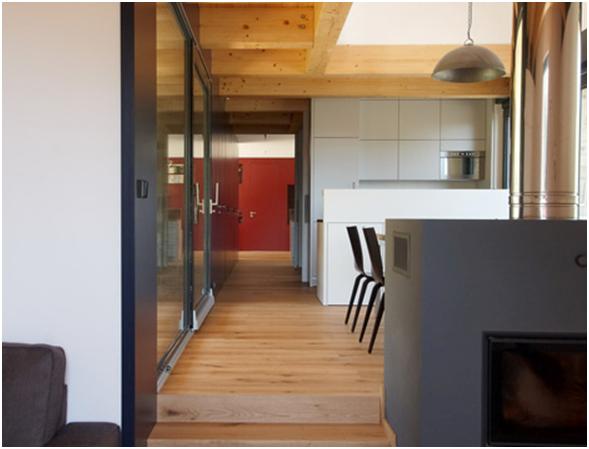
Our design proposal originated from characteristics of local historic architecture, hence half of the house is made of stone and other half of timber, this duality derives from original division between dwelling and a workshop or a barn. Traditional open barn entrances with in/out passage inspired the high clearance glazing. These opportunities for vistas bring desired southern light into the interior while opening unique view at forests in the north and peaks of mountains.
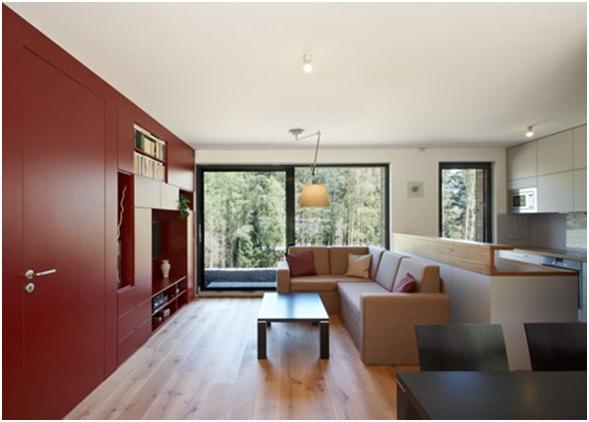
A simple pitched roof covers the entire building volume. For roof material we selected weathered titanium-zinc sheets resisting severe weather conditions. The roof is in 45dg and the ridge is oriented parallel to the entrance as well as the main building axes.
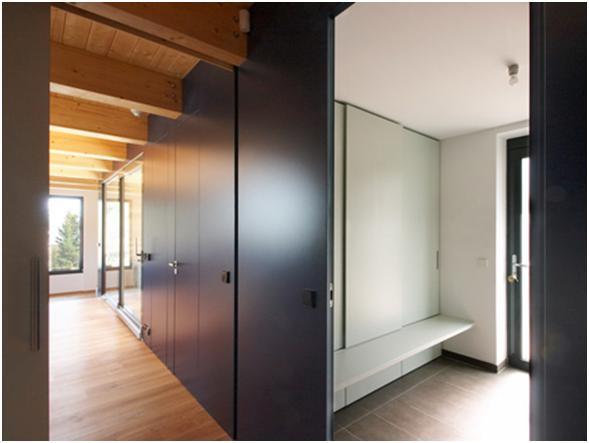
Building volume of the house is very simple and uncomplicated therefore the final design is a pure form without any additional architectural element. The final form is very respectful to the traditional building forms in the area and originates from principles of local vernacular architecture.
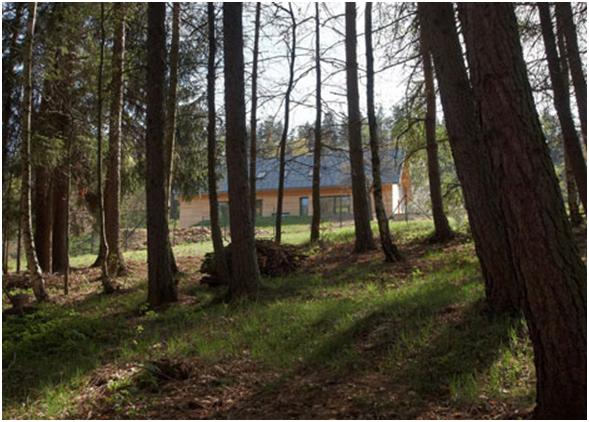
Building plans extends from ground floor to the attic space right above, both used as dwelling. The house is used as a terraced house with the entrance located in the centre of the building volume.
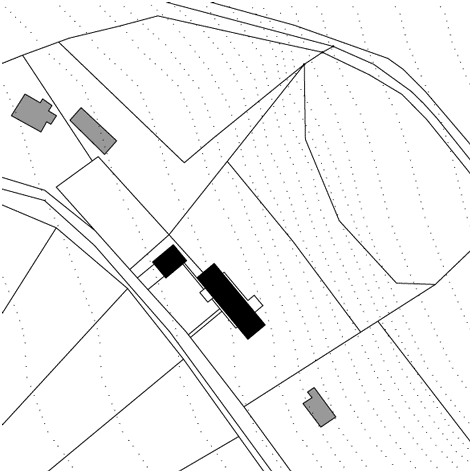
Above: site plan
Client: private clients
Location of site: Cesky Raj, Czech Republic
Program: housing 198 sqm
Project by (firm name): Stempel & Tesar architects
Principal designer: Jan Stempel, Jan Tesar
Site area: 2715 sqm
Building footprint: 189 sqm
Design and construction: 2010-2012
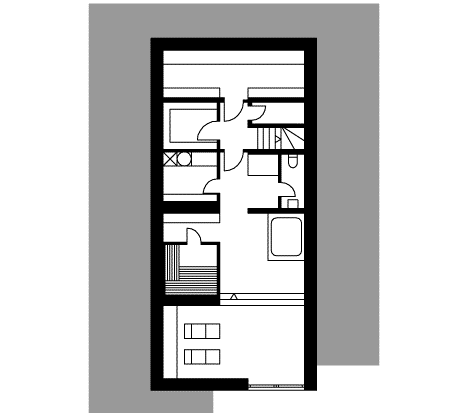
Above: basement floor plan
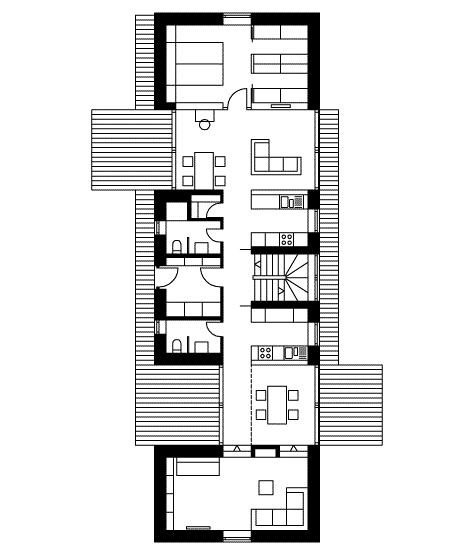
Above: ground floor plan
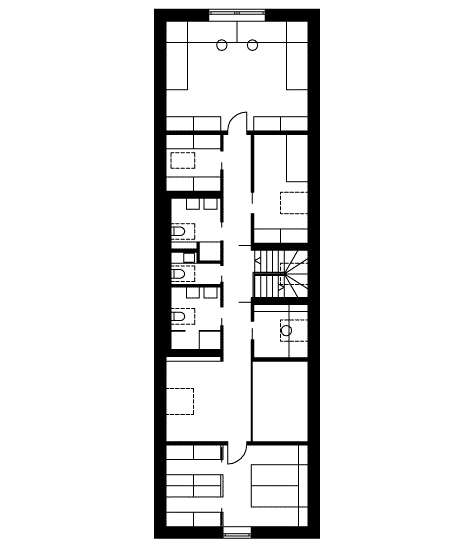
Above: first floor plan
